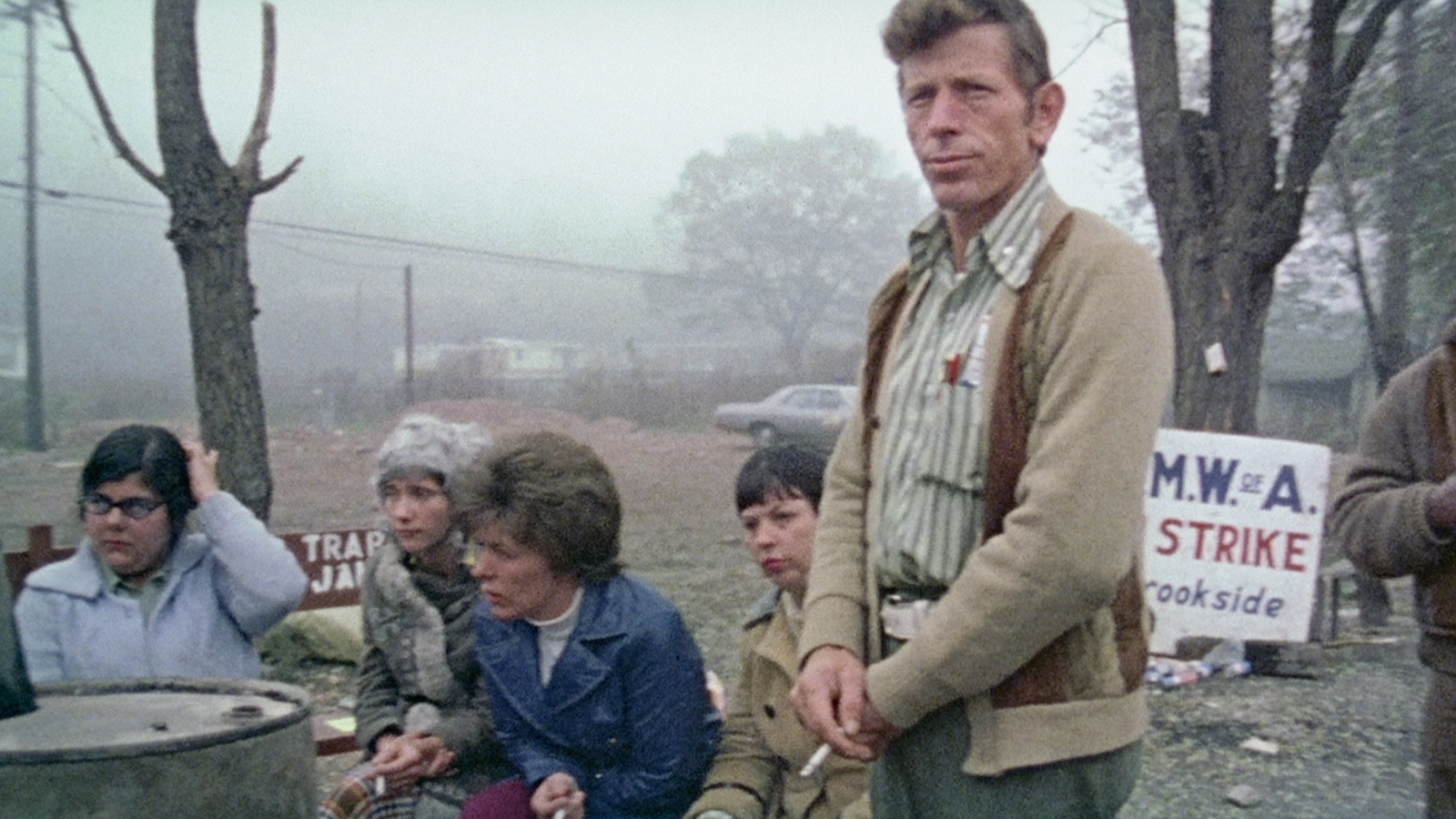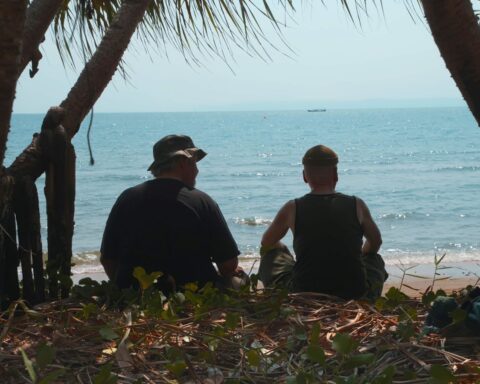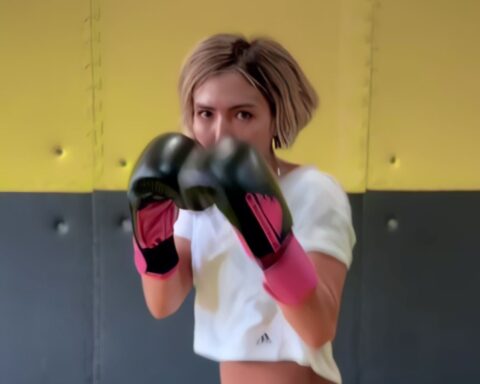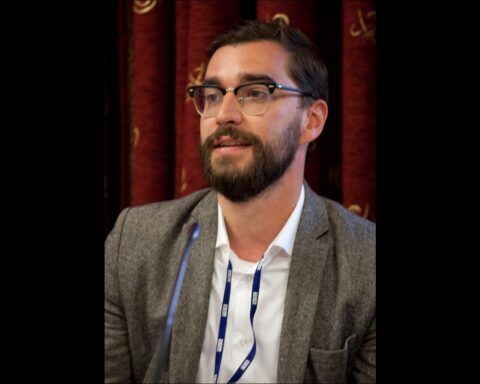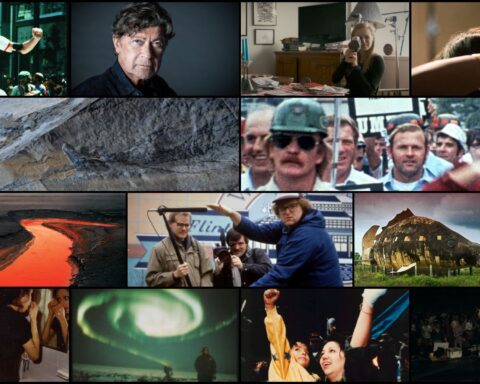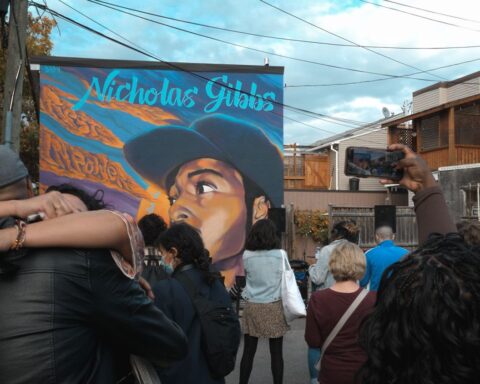Ask Samara Chadwick how she describes her high school years and the director admits she often poses the query herself. “It’s a question that I was asking people during the first interviews,” said Chadwick, speaking with POV from Switzerland via Skype ahead of 1999’s Hot Docs premiere. “The stories you tell most often become the most distorted. I wanted to get past whatever easy sentences we had used.”
Chadwick stages a cathartic class reunion with her fellow students from Moncton’s École Mathiue-Martin in 1999. The meditative film invites the students, now adults in their 30s, to revisit a painful chapter of their adolescence. The doc, co-produced by the NFB, chronicles a tragic string of suicides at Mathieu-Martin in which several students took their lives in the school year of 1999. This powerful and revelatory study of trauma and healing tackles the complexity of grief through the elusiveness of language. There are no easy answers to a topic as hard as suicide.
Comfort Zones and Chiac
Language is a highlight of 1999 as the doc features the subjects discussing their memories in the Acadian language of Chiac, which is a kind of regional franglais with a rich history and character. The subjects alternate between French and English in the same sentence, but Chadwick admits they needed some direction to speak naturally.
“It was clear from the start that when you put a camera on Acadians, their first instinct is to speak French,” she explains. “People found that once the camera was on it was hard to flip back to speak how we would normally talk off camera. If I had to speak correct French, I would have to say the correct things. There’s a whole persona that comes with the correct French that we wanted to avoid.” The hybrid Chiac offers unique emotional intonations one might not find in straightforward English or French. The transitions between languages often signal the speakers’ discomfort, In fact, they navigate their comfort zones through the complexity of language.
Chiac adds a political inflection to the remembrances and to Chadwick’s return to the community. “There is a certain shame we grew up in terms of how we speak and as French Canadians, since we aren’t really recognized,” observes Chadwick on the choice to use colloquial Chiac in lieu of “proper” French or Quebecois.
“And as an actual gesture, since the whole film is about language and finding the words, this language blends two things that are seen as opposites in Canada,” adds Chadwick. “The spirit of the Acadians is so embodied in the language. They have this fluidity, affection, and playfulness. That was something I wanted to celebrate.”
The film evokes the distinct cultural identity of its setting through haunting covers of popular songs from the 1990s performed by Chiac artists. A French-inflected acoustic version of Pearl Jam’s “Jeremy,” for example, brings chills. The most haunting number, however, is one Chadwick withholds: the climatic cover of Pink Floyd’s “Wish You Were Here.” Chadwick admits that the unexpectedly high royalty fee nullified any chance of using the song, but in a film about absence, the loss of voice is chilling. “Wish You Were Here” is essential to 1999 because Chadwick assembles her peers to watch a video of the song played by three classmates. One of them committed suicide shortly after they performed the song at school and were reprimanded for singing in English to voice their pain.
1999 (Excerpt #3: Jeremy) from NFB/marketing on Vimeo.
Remembering
The choice to reopen scars proves both haunting and healing. At the beginning of the film, one of her classmates pointedly asks Chadwick why she should bother remembering. “The short answer is because it feels good,” laughs Chadwick. “We’re all scared of remembering, but it feels incredibly cathartic to do it together.”
The longer, and better, answer draws upon the collective journey the filmmaker and subjects had together. Chadwick says that a preview screening in Moncton found the right language to articulate the pain when she and the subjects of the film took questions from the audiences “One of [the subjects] is an osteopath and her answer is the idea that trauma inhabits the body even if you don’t acknowledge it verbally,” explains Chadwick. “She said that as an osteopath she sees trauma because the way energy flows through the body becomes blocked. A deep trauma, like a death, creates a complete blockage in the flow of energy. The act of remembering is the act of reactivating that flow.”
Light and Energy
This flow gives 1999 a unique energy, a chi, as Chadwick bathes the film with light rather than darkness. Despite the heavy subject matter, it’s a visually buoyant film. The doc is one of the few standouts to introduce an auteurist voice at Hot Docs this year. Chadwick, who also programs films with the Camden International Film Festival and previously worked with Hot Docs and Montreal’s doc fest RIDM, displays an adept hand at formal sophistication. 1999 articulates grief and acknowledges the lost lives of the classmates through a prismatic aesthetic in which rays of light flicker atop and around speakers.
“I was thinking about how the form of the film was reflecting the content and how that comes about in the transparency of the images,” says Chadwick. She explains that the idea for the prism came when she and her sister discovered a piece of triangular glass while combing through the family attic. Sometimes the rays of light seen in the film are post-production additions; sometimes they’re happenstance, and in other instances, the film was deliberately shot through a prism. “We added it to footage to create a physical presence of a ghost,” Chadwick continues. “We embedded it in places that are haunted, where ghosts exist.”
Prisms also embody the film overall. “A prism allows light to pass through and many perspectives emerge,” Chadwick explains. “Like white light being refracted, it acknowledges the complexity and coexistence of these different narratives—different colours and perspectives.” The film invites comparison to Sarah Polley’s Stories We Tell as it interrogates the ways in which memories and stories are refracted and articulated in diverse ways. 1999 furthers this point by intertwining the contemporary interviews of old classmates with grainy video footage shot by Chadwick and several other students during their time at Mathieu-Martin, along with footage of an Acadian-set video game with which a former classmate maps the community. These fleeting and ghostly images invite viewers to make active sense of fragmented truths.
1999 (Excerpt #2: Lockers) from NFB/marketing on Vimeo.
“Why?”
1999 doesn’t ask the students to rationalize or speculate on the reasons behind the deaths of their classmates. If the deceased left any notes behind, Chadwick has the good taste to omit them from the kaleidoscopic tapestry of archival images and interviews that illustrates these fragmented memories. However, audiences often demand closure.
“I really resisted giving any answer to this question,” Chadwick insists when asked how she expects to confront the question when it inevitably arises at festival Q&As. “While we were pitching this film and all through the development phase, people asked that question as well. I would just outright refuse to answer. Everyone we interviewed had their own explanation. That’s the comfort zone for anyone who’s gone through trauma—to find a reason, a certain guilt or narrative that explains it.” Students instead discuss feelings of alienation during adolescence; feelings of euphoria, awkwardness, and despair that make high school some of the best and worst years of one’s life. These questions remain universal and more relevant than the immediate why of the lost class of École Mathiue-Martin. How does one even come of age when death is so paramount during adolescence?
“The answer I propose in the film is very subtle,” says Chadwick, “but 1999 is a symbolic year. We became adults, we turned 18, but we also entered this new millennium, which really fragmented our communities. As Acadians, I tell a little about our historical context.”
An Acadian Tragedy
Chadwick reflects on the community and sees deeply rooted currents that contribute to this alienation. “I’m a social scientist and the first book in social science is called Suicide. It charts the movement of capitalism as parallel—the ratio of capitalism to suicide, they move together,” says the director, who holds a PhD in cultural studies.
“Growing up in the 90s, my cohort of kids, we were the first generation that was accessing the middle class.” Their parents had fought for education in French and they were the first generation of Francophones that were promised this bright new future. “We were starting to doubt that in 1999. There was a certain dread,” Chadwick reflects. “What the film calls for and enables is the hope of finding community again.”
1999 screens:
-Sat, Apr. 28 at 3:30 PM at TIFF Lightbox
-Sun, Apr. 29 at 8:30 PM at Scotiabank
-Fri, May 4 at 4:00 PM at TIFF Lightbox
Hot Docs runs April 26 to May 6. Please visit hotdocs.ca for more info.
Visit the POV Hot Docs Hub for more coverage from this year’s festival!
1999 (Trailer) from NFB/marketing on Vimeo.




